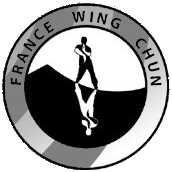LET’S TALK ABOUT THE 5 ELEMENTS IN WING CHUN
Before you can better understand what are the 5 elements in wing chun martial art, you have to come back to the Taoist culture with the idea of Yin/Yang.
I could as so many others cite ancient texts and say that: Yin Yang expression finds its meaning in change, mutation, movement. These two forces in constant conflict but completely dependent upon each other go gradually through growth and decline stages in natural cycles and as it was the case for me at the beginning of my martial training in Hong Kong, I’m sure your little inner voice begins to hop up and down and shout that it is not this kind of explanation that will make your fighting skills efficient.
Now, if instead of saying the yin yang is night and day, woman and man, I say that is it down and up, right and left, at this moment you can start practicing with this symbolism of Yin and Yang.
When you stand in Yee Jee Kim Yeung Ma (basic posture), the upper and lower part of the body must be balanced. How many practioners go down much too far thinking that with an anchored posture, at least the opponent will have difficulties in moving them. It’s true, but the advantage becomes a mobility issue, such is Yin and Yang.
When your Tan Sao performed with the right arm is well positioned, but Tan Sao of your left arm is not well positioned, you favor skills that are already here, but neglect lack of flexibility from another body part.
This is the basis of Yin/Yang in martial art, make us understand and see what must never be forgotten, work the whole of our body.
Stay open minded!!
Now let’s go with principle of the 5 elements.
Just a reminder:
Wood movement represents the nascent strength, growth, forward thrust. It is the nascent yang. Wood is the idea of a vegetable that sprouts and grows towards the sun.
Fire movement represents strength’s height, moving force at its maximum, yang at its peak. Fire goes up.
Earth movement is Yin and Yang as earth receives and produces. Earth allows sowing, growing and harvesting.
Metal movement represents condensation, concentration of strength, return to the depth, toward cooling down. It is the decreasing yang.
Water movement represents wisdom, gestation of a new cycle.
I could say at this point that “Siu Lim Tau” means the germinating little idea what points toward a connection with wood , that “Cham Kiu” means looking for the bridge and therefore could be pointing to the place where we want to go when we want to run away, escape from a fire movement (or find water to extinguish this fire) and that “Biu Jee” meaning literally fingers as stings, is in fact an implicit expression explaining how to throw energies from the body thanks to the ground and as such thanks to the earth movement.
Wooden dummy would be the form that allows reaching depth in its capacity to harmonize its whole body. One will forge its body as the metal movement.
Wing chun weapons then become water movement, where you have to find back flexibility and increased harmony in order not to stagnate and be able to catch the good waves.
And there we are. I think at this stage the five elements theory is of greater meaning to you. But before I stop, I remind you of our first idea, Yin and Yang. Find another way of looking, look for the opposite and ask yourself if there couldn’t be a little of each element in each form? Would there be techniques that are composed mainly of one or another of the elements? And last point, we know that each element is connected to emotions, so how do you know that your nature (that is called Ming Men) is not playing you tricks in your practice?
Enjoy your search!







